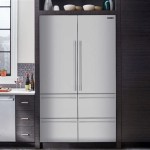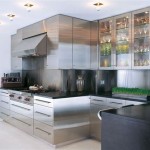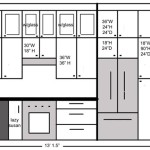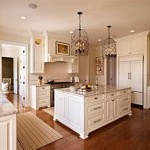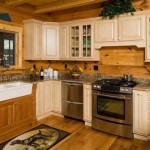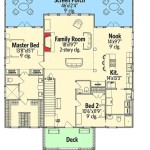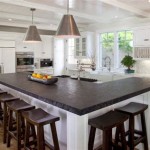Placement of Kitchen Cabinet Handles: A Comprehensive Guide
The placement of kitchen cabinet handles is a seemingly minor detail that significantly impacts both the functionality and aesthetics of a kitchen. Correct handle placement enhances ease of use, contributes to the overall design cohesiveness, and can streamline daily tasks. Conversely, poorly positioned handles can lead to awkward maneuvering, a disjointed appearance, and even potential damage to cabinet surfaces or appliances. This article provides a detailed guide to understanding the factors involved in selecting and positioning kitchen cabinet handles.
Numerous elements influence the optimal placement of cabinet handles. These include cabinet style, door and drawer dimensions, handle design, and preferred aesthetic. There is no single “correct” placement; instead, a balanced approach that considers each of these factors is necessary to achieve the desired result. Careful planning and consideration of handle placement are crucial for creating a functional and visually appealing kitchen space.
Understanding the Impact of Cabinet Style on Handle Placement
The style of kitchen cabinets significantly influences the recommended placement of handles. Traditional, transitional, and contemporary cabinet styles each lend themselves to different positioning strategies. Traditional cabinets often feature raised panel doors and ornate detailing. For these cabinets, handles are typically placed to complement the existing detailing and enhance the overall sense of elegance. A common practice involves centering the handle on the door stile, the vertical frame member, for a symmetrical and balanced look.
Transitional cabinets, which blend elements of traditional and contemporary design, offer more flexibility in handle placement. Handles can be positioned similarly to those in traditional kitchens, focusing on symmetry and balance, or they can be placed in a more contemporary style, using clean lines and simple positioning guidelines. The choice often depends on the specific characteristics of the cabinet and the desired overall aesthetic.
Contemporary cabinets, characterized by their sleek lines and minimalist design, typically benefit from handle placements that emphasize simplicity and functionality. Handles are often positioned horizontally on drawers and vertically on doors, reflecting the clean, uncluttered look associated with contemporary design. The focus is on creating a streamlined appearance that complements the minimalist aesthetic.
Beyond these broad categories, specific cabinet door styles such as slab doors, Shaker doors, and glass-front doors, each present unique considerations for handle placement. Slab doors, devoid of ornamentation, provide the most flexibility, while Shaker doors, with their recessed panel design, often benefit from handle placement on the stile. Glass-front doors may require careful consideration of the visibility of the handle hardware and its impact on the overall design.
Determining Handle Placement Based on Door and Drawer Dimensions
The size and shape of cabinet doors and drawers play a crucial role in determining the optimal handle placement. Smaller drawers, typically less than 12 inches wide, often require only a single handle centered on the drawer front. This provides a balanced and aesthetically pleasing appearance. For wider drawers, two handles are generally recommended to distribute the pulling force and prevent uneven wear on the drawer mechanism.
The placement of two handles on wider drawers should be carefully considered. A general guideline is to divide the drawer front into thirds and position the handles at the intersection of the middle third and the outer thirds. This provides a balanced appearance and ensures comfortable access for opening the drawer. However, personal preference and the specific design of the drawer may influence the final placement.
Tall pantry doors and other large cabinet doors often benefit from longer handles or pulls to provide adequate leverage. The placement of these handles should consider the user's reach and ensure comfortable access to the contents within the cabinet. A common practice is to position the handle approximately one-third of the way down from the top of the door, providing a convenient and ergonomic grip.
For base cabinets, the handle placement is typically consistent with the positioning of the door or drawer. If the base cabinet includes both a door and a drawer, aligning the handles can create a unified and visually appealing look. This can be achieved by positioning the handle on the drawer at the same height as the handle on the door.
Selecting Handle Styles to Complement Kitchen Design
The style of handles chosen for kitchen cabinets significantly contributes to the overall aesthetic. Numerous handle styles are available, ranging from traditional knobs and pulls to contemporary bar handles and minimalist finger pulls. The selection of handle styles should complement the existing kitchen design and reflect the desired aesthetic.
Knobs are a classic choice for kitchen cabinets and can be particularly well-suited for traditional and transitional designs. They are typically smaller and more discreet than pulls, offering a subtle accent to the cabinet doors and drawers. Knobs are often used on upper cabinets, while pulls are used on lower cabinets for enhanced leverage and ease of use.
Pulls, available in a wide range of styles and sizes, provide a more substantial grip and are often preferred for larger doors and drawers. Bar pulls, characterized by their sleek and linear design, are a popular choice for contemporary kitchens. They offer a clean and minimalist look that complements the uncluttered aesthetic of modern design.
Cup pulls, with their recessed design and curved profile, are a popular choice for farmhouse and vintage-inspired kitchens. They provide a comfortable grip and add a touch of nostalgic charm to the cabinetry. Finger pulls, characterized by their concealed design, are a minimalist option that creates a seamless and uncluttered look. They are often used on contemporary cabinets and drawers where a streamlined appearance is desired.
The finish of the handles should also be carefully considered to complement the other hardware and fixtures in the kitchen. Popular finishes include brushed nickel, polished chrome, oil-rubbed bronze, and matte black. The choice of finish should reflect the desired aesthetic and create a cohesive and harmonious look throughout the kitchen.
Beyond the aesthetic considerations, the functionality of the handles should also be taken into account. The handles should be comfortable to grip and easy to use, even with wet or greasy hands. The size and shape of the handles should be appropriate for the size of the doors and drawers, providing adequate leverage for opening and closing them.
The material of the handles should also be durable and resistant to wear and tear. Common materials include stainless steel, brass, and zinc. The choice of material should reflect the expected usage and the desired lifespan of the handles.
In summary, the placement of kitchen cabinet handles is a critical design decision that impacts both the functionality and aesthetics of the kitchen. Careful consideration of cabinet style, door and drawer dimensions, handle design, and personal preference is essential for achieving the desired result. By following the guidelines outlined in this article, homeowners can make informed decisions about handle placement and create a kitchen that is both beautiful and functional.

Cabinet Hardware Placement Guide

The Ultimate Guide For Cabinet Hardware Placement And Sizing

How To Install Cabinet Handles Straight Without Losing Your Mind

Comprehensive Guide To Cabinet Hardware Size Placement Handles More Ltd

A Designer S Guide To Hardware Placement

Cabinet Pulls And Knobs Placement

Comprehensive Guide To Cabinet Hardware Size Placement Handles More Ltd

Cabinet Hardware Placement Guide For Shaker Cabinets

Where To Place Cabinet Hardware Emtek Living Blog

How To Install Handles And Knobs On Shaker Drawer Fronts

